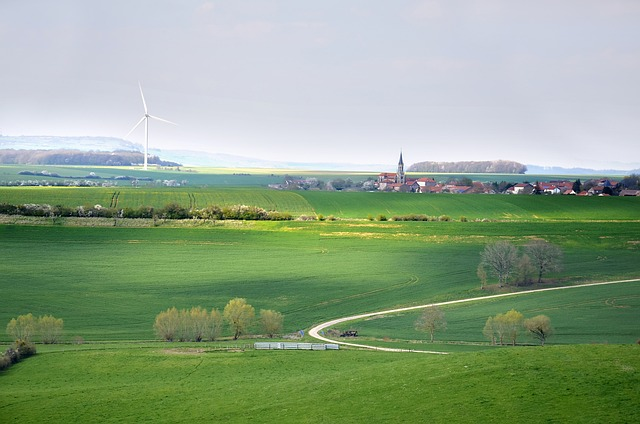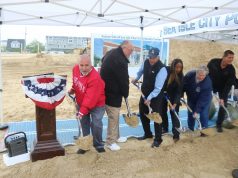Arman Gabay is the Co-Managing Partner of The Charles Company, a real estate development and investment partnership in California. In the following article, Arman Gabay discusses how as a leading state in environmental initiatives, California is taking bold steps to transform its real estate sector, ensuring a greener and more resilient future for its residents and businesses.
So read on to learn more about the world of sustainable real estate development in California, where architects, developers, contractors, and policymakers are joining forces to create eco-friendly buildings and communities that will shape the future of the Golden State and lead the way towards a more sustainable and prosperous future for all.
Arman Gabay Discusses California’s Green Building Standards
California leads the way in sustainable development as the first U.S. state to adopt and implement a green building code that conserves natural resources and fosters sustainability. The real estate and construction sectors are known to have a large environmental footprint. They consume a great deal of energy, resulting in emissions of greenhouse gases and an increasing amount of waste. This calls for urgent action to address these pressing environmental issues, making sustainable development practices a top priority for the real estate industry in California.
Arman Gabay says the state has set an ambitious target of reaching carbon neutrality by 2045, aiming to substantially reduce carbon emissions and increase the use of renewable energy sources. The adoption of sustainable real estate practices plays a pivotal role in achieving this goal, as it can lead to a decrease in energy consumption, greenhouse gas emissions, and waste generation. California’s real estate sector, in adopting sustainable development practices, contributes to a greener future and sets a model for other states and countries.
The Charles Company and Energy Efficiency in Buildings
California’s mandate to double energy efficiency in buildings by 2030 is a testament to the state’s commitment to sustainable development. This audacious initiative mandates architects, developers, and contractors to give precedence to energy-efficient design and construction practices, which guarantees buildings meet top environmental performance standards and aid in fostering sustainable communities.
Arman Gabaee notes that the latest California Energy Commission (CEC) standards reflect the state’s determination to revolutionize the real estate sector towards sustainability. These standards mandate the installation of solar photovoltaic systems for new homes, promote demand-responsive technologies such as battery storage and heat pump water heaters, and revise indoor and outdoor lighting standards. Charles Company offers assistance in structuring and negotiating performance-based energy efficiency agreements for both building owners and energy service companies, ensuring improved indoor air quality and overall building performance.
The impact of these energy efficiency standards is significant. Homes built under the 2019 energy efficiency standards in California are projected to cut greenhouse gas emissions by 700,000 metric tons over a three-year period, markedly reducing their environmental footprint.
Renewable Energy Integration
In addition to its energy efficiency goals, California is also striving to obtain 100% carbon-free electricity by 2045. This ambitious target underscores the importance of integrating renewable energy sources in real estate projects across the state. Some of the renewable energy sources utilized in California real estate projects include:
- Wind
- Solar
- Geothermal
- Small hydroelectric generation
These renewable energy sources help in reducing greenhouse gas emissions by curbing the state’s reliance on fossil fuels and minimizing greenhouse gas emissions.
Renewable energy integration refers to the process of incorporating renewable energy sources, such as solar and wind power, into existing electric power systems. This process involves connecting renewable energy generation facilities to the grid and optimizing their operation and planning to ensure a reliable, cost-effective, and efficient electricity system. California has made remarkable progress in this area, with approximately 36% of its electricity currently being sourced from renewable sources.
As the state continues to push forward with its renewable energy goals, the real estate sector plays a vital role in embracing and promoting the integration of clean energy sources into new and existing projects. This joint effort plays a key role in enabling California to reach its climate goals, laying the groundwork for a more sustainable future.
Charles Company on Adaptive Reuse and Historic Preservation
Arman Gabay explains that adaptive reuse and historic preservation projects offer a unique approach to sustainable development by conserving resources, reducing waste, and preserving cultural heritage. By repurposing existing buildings and structures for new purposes while preserving their historical and architectural integrity, these sustainable projects contribute to the conservation of valuable resources and the revitalization of communities.
Examples of adaptive reuse and historic preservation projects include:
- The conversion of an old factory into a modern office building
- The restoration of a historic building to its original state
- The safeguarding of a cultural site
By adopting these sustainable development practices, California real estate projects can conserve resources while also safeguarding the cultural heritage of local communities.
Transit-Oriented Developments and Walkable Communities
 Transit-oriented developments and walkable communities are gaining prominence in California as a means to promote sustainable living by reducing automobile dependence, improving air quality, and encouraging active lifestyles. According to Arman Gabay, real estate professionals play a crucial role in developing such communities by providing sustainable transportation options and promoting the integration of public transportation systems and pedestrian-friendly designs.
Transit-oriented developments and walkable communities are gaining prominence in California as a means to promote sustainable living by reducing automobile dependence, improving air quality, and encouraging active lifestyles. According to Arman Gabay, real estate professionals play a crucial role in developing such communities by providing sustainable transportation options and promoting the integration of public transportation systems and pedestrian-friendly designs.
Incorporating infrastructure and amenities that encourage walking, cycling, and public transportation enables real estate professionals to lessen dependence on private vehicles, mitigate traffic congestion, and reduce carbon emissions. In addition, Arman Gabaee states that transit-oriented developments and walkable communities can contribute to the creation of healthier, more vibrant, and sustainable communities, enhancing the overall quality of life for residents.
The development of transit-oriented projects and walkable communities in California is not only a testament to the state’s commitment to sustainable development but also a reflection of the growing demand for eco-friendly and health-conscious living options among its residents. As the real estate industry continues to progress, nurturing sustainable communities will persist as a paramount priority for developers, architects, and policymakers.
Arman Gabaee on Water Management and Conservation Strategies
Water management and conservation strategies play a vital role in ensuring the long-term sustainability of California’s real estate projects. By implementing innovative methods, such as metering, measuring, and managing water usage, optimizing cooling towers, and replacing restroom fixtures, developers can significantly reduce water consumption and promote responsible water use.
Another effective strategy for reducing water consumption in buildings is the implementation of greywater recycling and wastewater treatment systems. Recent data indicates that these practices can potentially reduce water consumption in buildings by up to 50%, showcasing the significant impact that water management and conservation strategies can have on the sustainability of real estate projects.
As California faces increasing challenges related to water scarcity and environmental regulations, the adoption of water management and conservation strategies in real estate projects becomes even more crucial. Incorporating these sustainable practices enables developers to guarantee not only the sufficient supply and quality of water resources, but also to augment the long-term resilience of their projects and communities.
Collaboration and Advocacy for Sustainable Policies
Collaboration among architects, developers, contractors, and policymakers is essential for advocating and implementing sustainable policies and regulations in California’s real estate industry. Working collaboratively, these stakeholders can guarantee the adoption of sustainable practices throughout the development process, from design and construction to operation and maintenance.
Arman Gabaee explains that the role of policymakers is particularly crucial in creating and enforcing regulations that encourage sustainable development. By establishing clear guidelines and incentives for sustainable practices, policymakers can help to drive the adoption of eco-friendly construction methods and technologies, ensuring that the real estate industry remains at the forefront of sustainability efforts.
As the real estate industry continues to embrace sustainable development practices, Charles Company says collaboration and advocacy for sustainable policies will be essential for driving progress and ensuring a greener and more prosperous future for California and its residents.
Summary
Throughout this blog post, we have explored the various aspects of sustainable development practices in California real estate, from green building standards and sustainable construction practices to innovative technologies and solutions. It is clear that the real estate industry in California is at the forefront of sustainable development, with architects, developers, contractors, and policymakers working together to create eco-friendly buildings and communities that will shape the future of the Golden State.
As we continue to face the challenges posed by climate change and resource scarcity, Charles Company and Arman Gabay explain that embracing sustainable development practices in real estate projects becomes even more crucial. By incorporating energy-efficient design, sustainable construction methods, and innovative technologies, the real estate industry in California can lead the way towards a more sustainable and prosperous future for all.








